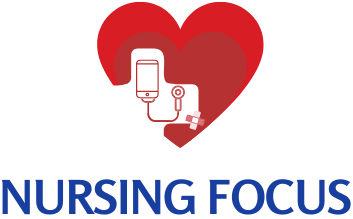Wearable technology has advanced significantly in recent years and is now used in many sectors, including healthcare. Wearable technology has the potential to revolutionize patient care, increase results, and boost nursing practice effectiveness. This blog post will look at the innovative ways that wearable technology is being used in nursing and how it is changing the way that healthcare providers provide care.

1. Remote Patient Monitoring:
One of the nurse-related uses for wearable technology that has the most potential is remote patient monitoring. Sensor-equipped wearables can continually track a patient's vital signs, level of activity, and other health indicators. This data is accessible by nurses remotely, enabling real-time monitoring and the early identification of potential health problems. This technology makes it possible for medical professionals to keep eyes on the health state of patients with chronic diseases without needing to see them frequently in person. Some advantages of remote patient monitoring are:
- Reduced hospital readmissions
- Improved chronic illness management
- General patient wellbeing
2. Fall Detection And Prevention:
Falls, especially among older individuals, are a serious problem. When a patient falls, wearable technology with fall detection capabilities can instantly notify nurses or other caregivers. These gadgets use in-built sensors to recognize abrupt impacts or changes in motion and send out an alert right away. This quick response enables medical professionals to offer
- Aid and treatment in a timely manner
- Reducing the chance of fall-related injuries
- Enhancing patient safety
Wearable technology for fall detection and prevention is especially useful for patients in long-term care facilities or those who live alone.

3. Medication Adherence:
Patients frequently struggle with medication non-adherence, which has a negative impact on their health and raises their healthcare costs. Patients can remember to take their drugs on time with the aid of wearable technology, such as smart pill bottles or medication reminder rings. These gadgets can send alerts to patients or caregivers when
- Doses are missed
- Track medicine usage
- Provide visual or audio reminders
These tools can help nurses monitor patient compliance, increase medication adherence, and intervene as soon as necessary. The likelihood of medication mistakes is decreased and treatment results are improved with improved drug adherence.
4. Patient Engagement and Self-Management:
Patients are given the tools they need through wearable technology to take an active role in their healthcare and take control of their ailments. With the use of gadgets like fitness trackers or smartwatches, Patients can be encouraged to:
- Adopt healthy habits
- Track their exercise levels
- Keep eyes on their sleep patterns
- Manage stress
These tools give patients immediate feedback, tailored advice, and encouraging cues so they may decide what is best for their health and wellbeing. Nurses can use wearable technology to encourage patient participation, education, and self-care, which will increase patient satisfaction and health outcomes.

5. Health and Safety of the Nursing Workforce:
Because nursing is a physically demanding job, wearable technology can be used to keep track of nurses' health and wellbeing. Nurses' activity levels, stress levels, and weariness can be monitored by devices like smart clothing or fatigue monitoring wearables, allowing for prompt interventions and preventative actions to protect their health and safety. When a nurse exerts themselves beyond what is considered safe or when their stress levels get too high, these devices can send them notifications. By keeping an eye on these parameters, nurses can take the necessary action to manage their health and avoid burnout.

Wearable technology has the potential to completely transform nursing practice by boosting patient care, increasing workflow efficiency, and encouraging patient participation. The uses of wearable technology in nursing are numerous and exciting, ranging from medication adherence and fall prevention to remote patient monitoring. Nurses have the chance to embrace these developments as these technologies continue to grow and use them to give their patients more individualized, effective care. Nurses may play a significant part in determining the direction of healthcare delivery in the future by remaining informed and embracing wearable technologies.

For more nursing tips and guidance kindly check out our mfocusreview.com website
To download our Nursing Focus app, click the following link:
Android Store:
https://play.google.com/store/apps/details?id=com.nursingfocus
Apple Store:
https://apps.apple.com/app/nursing-focus/id1633014109

